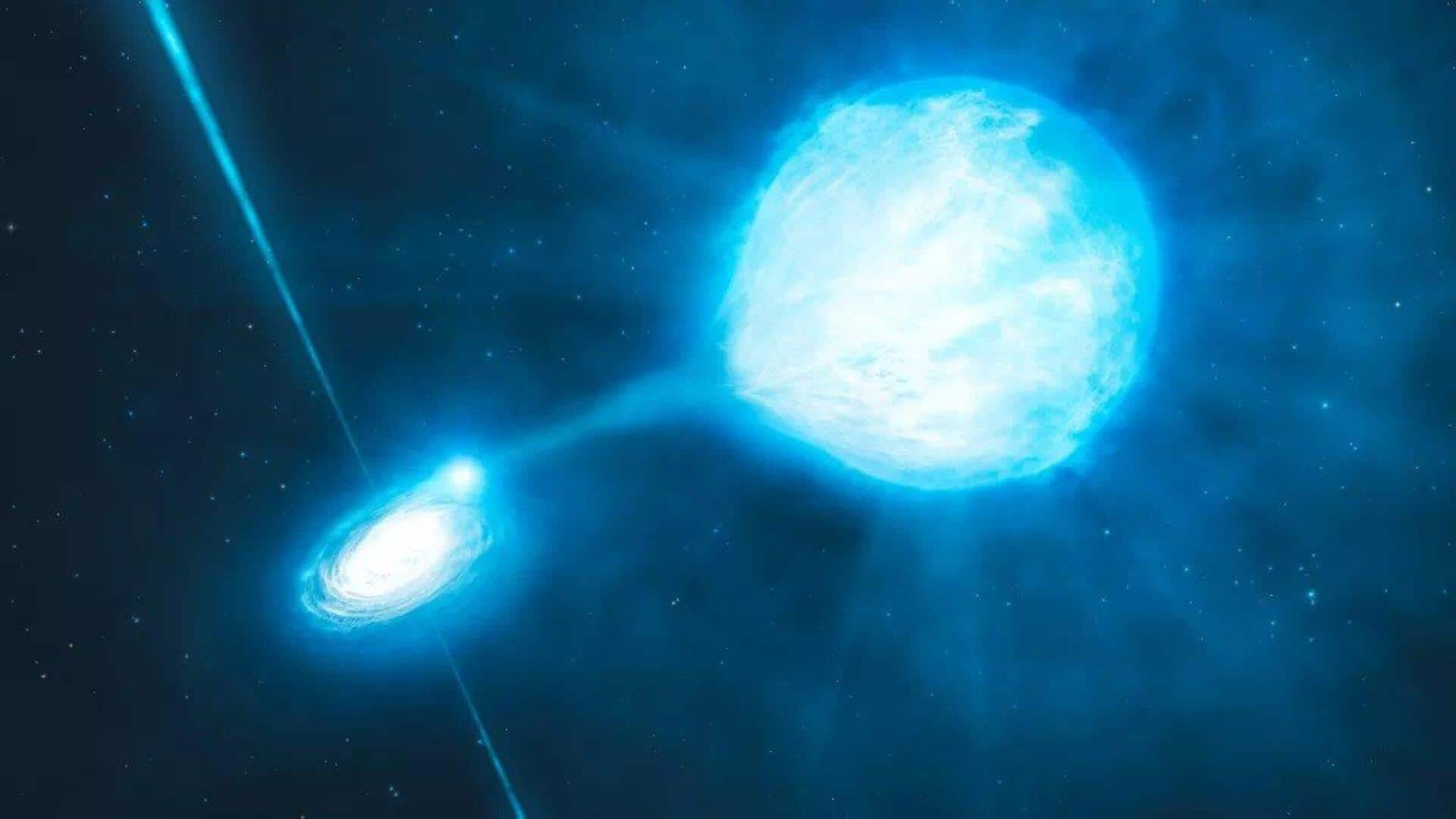
Quasi-periodic oscillations detected in binary star system: What are they?
What's the story
Astronomers from the University of Turku, Finland, have detected quasi-periodic oscillations (QPOs) in an X-ray binary system called XTE J0111.2-7317 or SXP31.0. The discovery was detailed in a research paper published on arXiv. The study was conducted using data from NASA's Nuclear Spectroscopic Telescope Array (NuSTAR), Swift spacecraft, and Spektr-RG (SRG) satellite to observe SXP31.0 during its latest major outburst that began in April 2023.
System details
A brief overview of SXP31.0
Discovered in 1998, SXP31.0 is a Be/X-ray binary system located in the Small Magellanic Cloud (SMC). It has an orbital period of 90.5 days and consists of a pulsar and a companion star of spectral type B0.5-1Ve. Previous observations have shown that this system experiences outbursts with luminosities reaching up to 100 undecillion erg/s, making it an ideal candidate for studying high-accretion rates.
Outburst
One of the brightest outbursts ever seen in BeXRB systems
During its latest outburst, SXP31.0 exceeded the Eddington limit of 180 undecillion erg/s for a 1.4-solar mass neutron star. This makes it one of the brightest outbursts ever seen in BeXRB systems. The observations also found 0.8-mHz quasi-periodic oscillations (QPOs) in SXP31.0 at a bolometric luminosity of about 250 undecillion erg/s. This makes it the fourth known super-Eddington X-ray pulsar to show millihertz low-frequency quasi-periodic variability.
Astrophysical implications
Insights into the discovery of QPOs
Quasi-periodic oscillations (QPOs) are thought to be caused by the interaction of matter in an accretion disk, with the magnetosphere of a compact object like a neutron star or black hole. In SXP31.0's case, the QPO was found to be transient, appearing only under certain physical conditions. This discovery could provide valuable insights into the complex dynamics of high-accretion-rate systems and their associated phenomena such as QPOs.